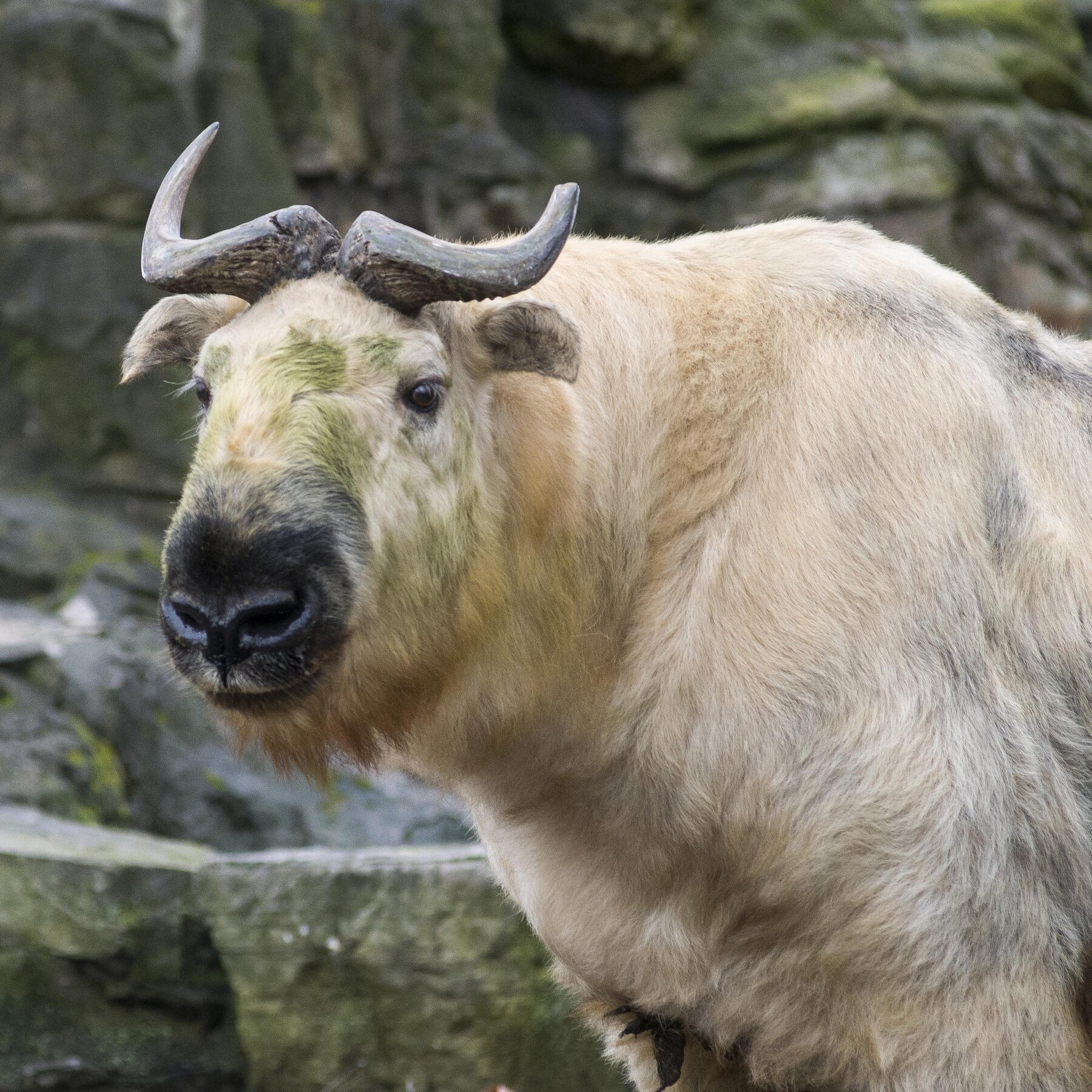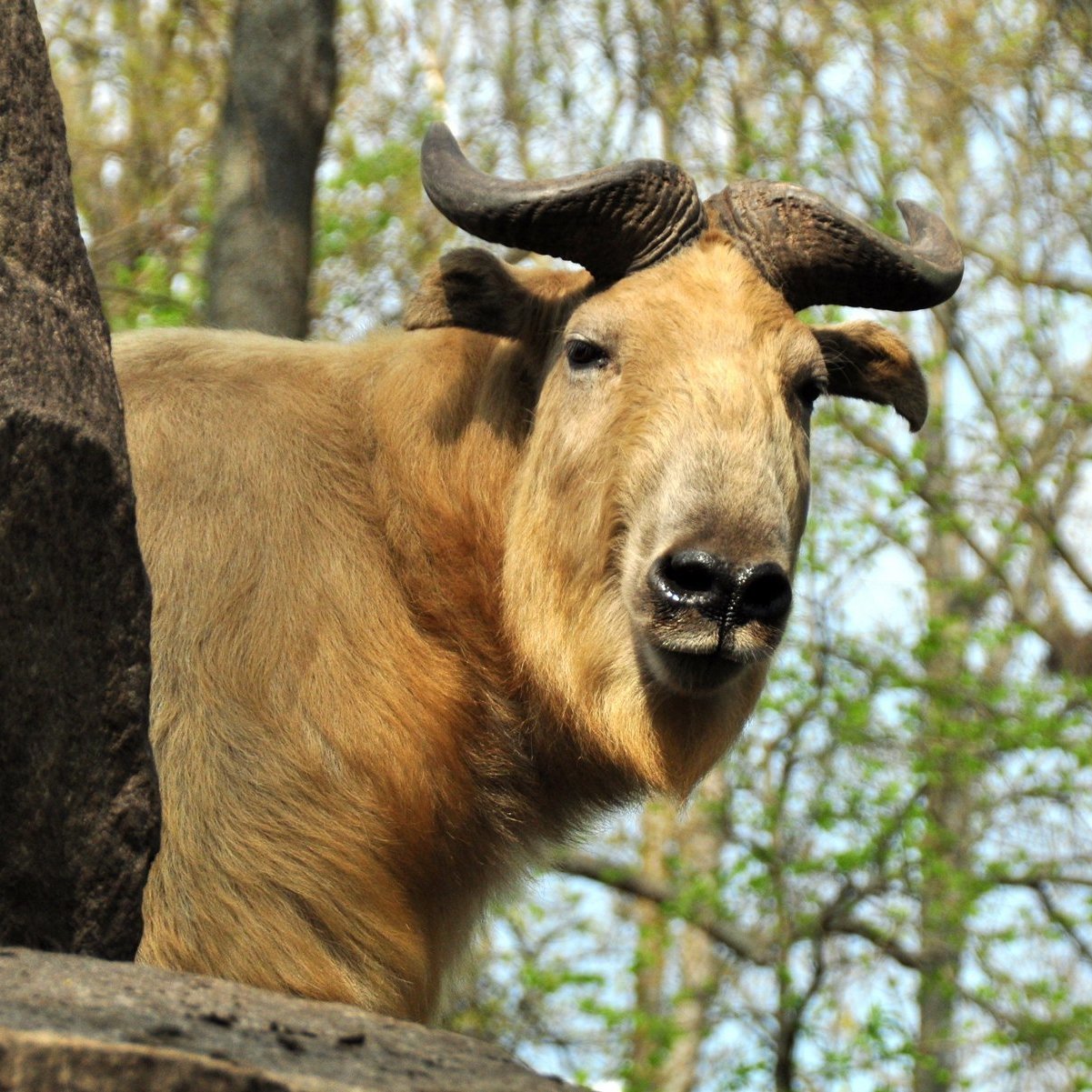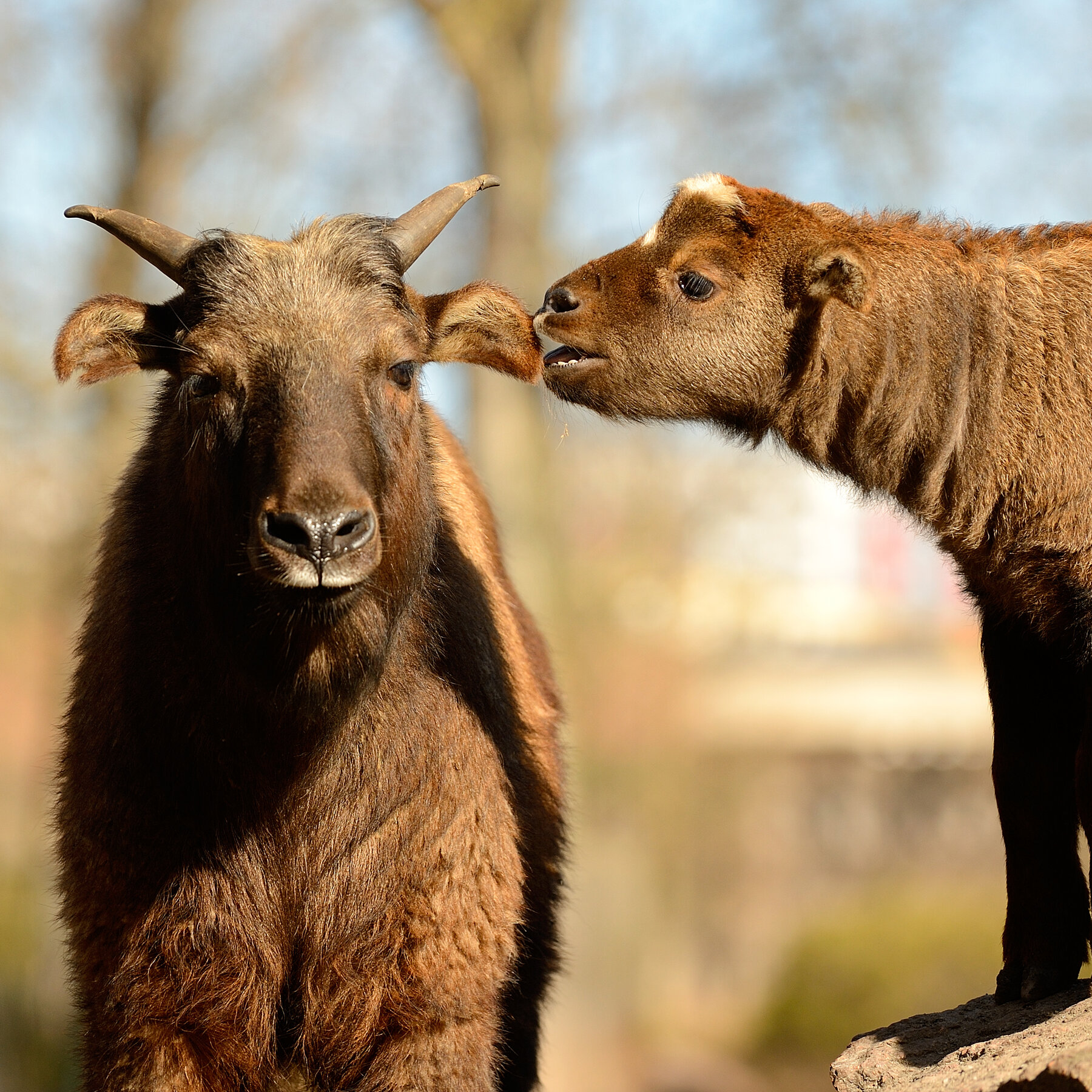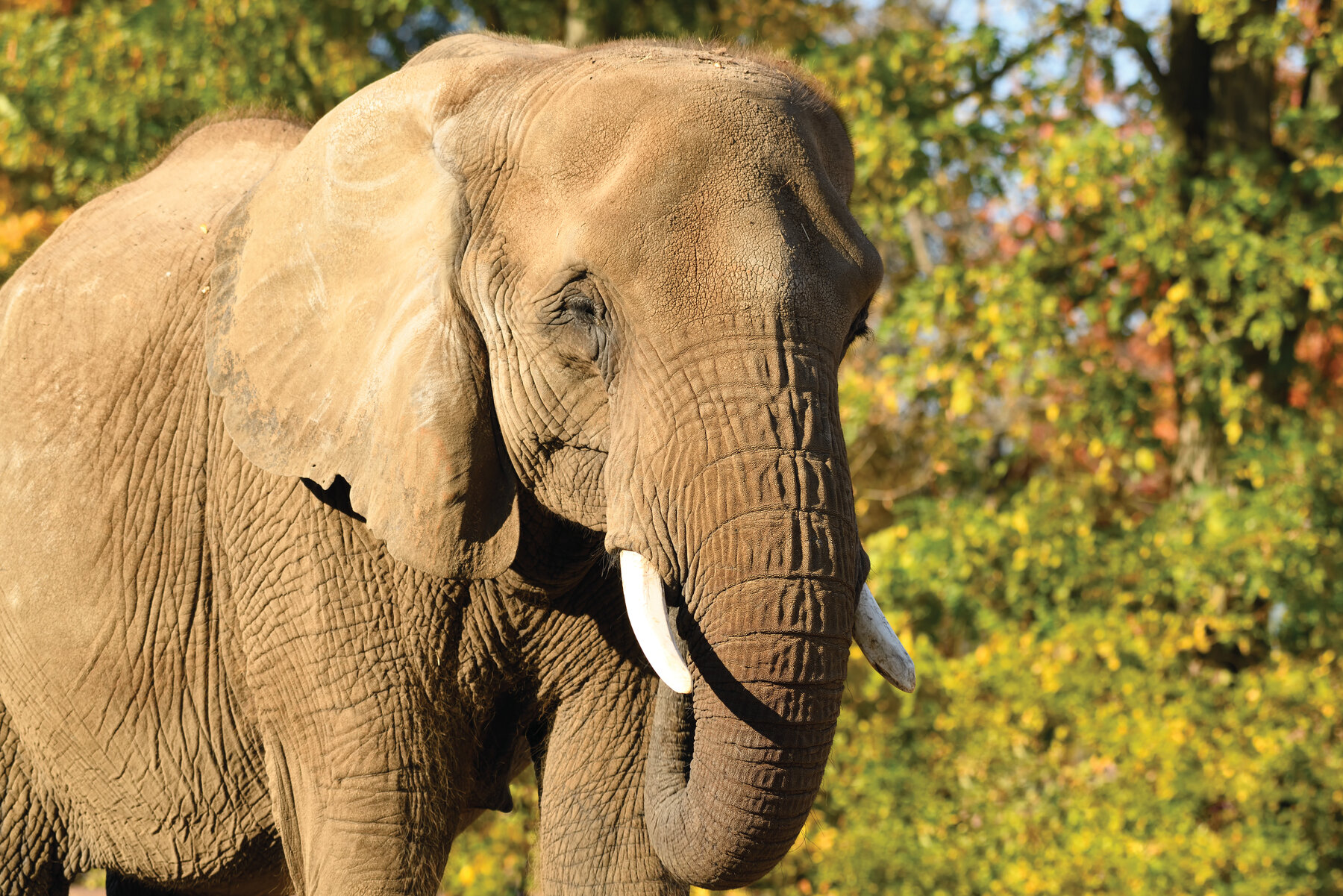Atlashirsch, Bawean-Hirsch, Davidshirsch, Hinterindischer Pferdehirsch, Mesopotamischer Damhirsch, Ostchinesischer Schopfhirsch,... Manchmal fragt sich der Besucher, warum der Tierpark verschiedene Arten und Unterarten von Tieren hält, die für ihn auf den ersten Blick alle recht gleich aussehen. Wir haben den Zoologischen Leiter Christian Kern gebeten, uns einen kleinen Einblick in die Auswahlkriterien von Tierarten zu geben. Er erklärt uns außerdem, was wir von diesen Tieren lernen können.
Die Auserwählten
Mr Kern, Tierpark Berlin is the only place in the world where visitors can see all three of the takin subspecies found in zoos. We understand that the takin is one of your favourite animals, but was one kind not enough?
One of our selection criteria when choosing which species to house is the current level of threat the animals face. The metaphor of Noah’s Ark is often used to describe the role of zoos, as they provide a place of refuge for endangered animals in particular. The golden takin, Sichuan takin and Mishmi takin are all classified as threatened by the International Union for Conservation of Nature. When assessing threat levels, the IUCN not only considers species, but in some cases subspecies, especially among mammals. For example, the northern white rhino will very soon be declared extinct, while the southern white rhino is currently only listed as “Near Threatened”.



But zoos also have an educational role. Isn’t it better to show people as many different animals as possible?
Not necessarily. Our educational work focuses largely on explaining how animals have adapted to their specific environments. And there are certain aspects of this topic that can be illustrated far better if people can compare different representatives of the same genus or species. For example, a principle known as Bergmann’s rule explains why polar bears are much bigger than Malayan sun bears, and Siberian tigers are larger than Sumatran tigers. In 1847, German biologist Carl Bergmann discovered a correlation between climate zones and the size of the animals that inhabit them. In colder areas, the individuals of closely related species are larger than their cousins in the tropics. Bergmann used penguins to illustrate this pattern. The largest species – the emperor penguin – lives in Antarctica, while the smallest – the aptly named little penguin – lives in Australia. The African penguin, likewise, is very small.
So why does body size depend on temperature?
It is thought to be an evolutionary adaptation. The larger an animal, the smaller its surface area in relation to its volume. That means larger animals lose less heat than smaller animals, which have a greater surface area relative to their volume.
That sounds quite complicated…
It’s actually quite logical. Warm-blooded animals, i.e. mammals and birds, generate heat internally in order to maintain a constant body temperature. The larger, the more voluminous, this heating system, the more warmth the animal can produce. Meanwhile, the surface of the body is constantly giving off heat. So the smaller the surface area, the less heat is lost. To be optimally equipped for life in cold climates, an animal should therefore have as large a heating system and as small a surface area as possible.
Another example: anyone who pays attention to the amount of packaging waste they produce will know that larger goods have more content and comparatively less packaging. Buying a kilo of sugar in one big bag, for instance, will generate much less packaging waste than buying the same amount of sugar in 200 little sachets.

Okay, that makes sense. But how does the African elephant fit in with this theory? Surely it’s counterproductive for such a large animal to live in such a warm climate?
Firstly, Bergmann’s observations only apply to animals from closely related species or subspecies that live in different climate zones – such as tigers and penguins. Secondly, there are exceptions to every rule. Elephants, however, do provides us with a good example of another climate adaptation rule. In 1877, American zoologist Joel Asaph Allen observed that the warmer the habitat of related mammals, the larger their physical appendages such as tail or ears. The African elephant is able to emit far more body heat thanks to the large surface area of its ears than, for example, the now extinct mammoth, whose relatively tiny ears helped it to retain more heat and withstand the chilly temperatures of its environment. The same applies to foxes: the ears of the Arctic fox are significantly smaller than those of the desert-dwelling Fennec fox.
You don’t need to be a biologist to understand these rules. If you think back to your maths or physics lessons at school, you may recall that a sphere is the object with the smallest surface in relation to its volume. This same rule can be applied to the animal kingdom: the colder the climate, the more spherical the animal!
That’s certainly an easy way to remember it! Thank you very much for the enlightening conversation.